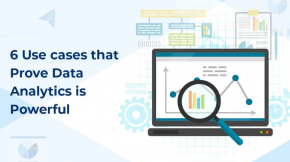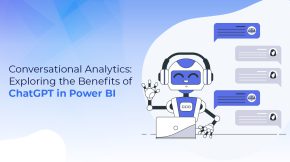The Game-Changing Potential of AI Data Extraction
Data drives modern business. But with data continuing to grow in volume and complexity across organizations, efficiently accessing, organizing and analyzing it poses an ever-greater challenge. This is where AI data extraction enters the picture – automating the capture and structuring of data to unlock its value.
So what potential does AI data extraction hold? And how can it transform document and data processing? This post explores the definition, role and benefits of AI document extraction to provide clarity. We’ll also overview key techniques powering this technology and reveal why it’s set to be a complete game-changer.
What is AI Data Extraction?
Data or AI document extraction refers to the process of retrieving information from documents or data sources and converting it into a structured format. The resulting organized data can then be integrated into databases and systems to drive workflows.
Traditionally, data extraction involved manual processes like copying and pasting or typing information from documents. As you can imagine, these methods are enormously time and effort-intensive.
This is where AI for document analysis comes in. AI data extraction solutions utilize technologies like machine learning and natural language processing to programmatically identify and extract relevant data points. This eliminates repetitive manual work for employees, while delivering higher accuracy and flexibility.
So in a nutshell, AI data extraction automates the retrieval and structuring of information from unstructured or semi-structured documents using intelligent algorithms. It captures the contextual meaning within documents and saves extracted data in a standardized format.
The Vital Role of OCR in AI Data Extraction Workflows
A key building block of AI document extraction is optical character recognition or OCR. OCR software converts text within image files or scanned documents into editable and searchable content.
Many data sources – from paper records to PDF files – store data exclusively as images. Running these through an OCR engine is therefore the first step to unlocking the text data. It allows data extraction tools to actually “read” and interpret the language within documents.
In short, OCR cracks open image-based documents so AI algorithms can work their magic to identify and capture important information. It’s an integral component enabling the automated analysis of invoices, statements, contracts and more.
How AI Drives Intelligent Data Extraction
AI document extraction brings automation, enhancements in accuracy and greater adaptability to the table compared to rule-based extraction methods. Let’s explore the key capabilities of AI data extraction in more detail:
Classification & Document Type Detection
AI classification algorithms learn to assign labels or categories to documents. As an example, a system trained on invoices could analyze headers, logos and key terms to determine that a new document is an invoice.
Reliable classification provides context to organize extracted data correctly. It also allows streamlining documents into relevant workflows.
Information Identification
Once documents have been digitized and classified, AI algorithms can get to work identifying pieces of information.
Modern deep learning techniques enable AI software to develop an intuitive sense of documents – mimicking human-level reading comprehension. The AI “understands” what extracted data represents based on surrounding text, tables, visual layout and more.
For an invoice use case, the AI could scan the document and locate key details like invoice numbers, due dates, line items, totals and supplier details based on patterns learned from past examples. It knows what data to capture and what different elements represent without needing hardcoded templates.
Data Structuring & Export
The smarter AI extraction tools can directly output information into structured formats like Excel tables without manual re-entry.
Advanced solutions like predefined Excel mapping allow exports directly into specific spreadsheet formats used across the business. AI structuring of extracted data is key to seamlessly integrating information into databases and operations without dependency on manual work.!
The Vital Role of Data Extraction & Analysis in Decision-Making
The overarching goal of extraction solutions comes back to enhancing organizational decision-making. Converting unstructured data into usable business intelligence that provides insights into:
- Customer behavior
- Market dynamics
- Operational efficiencies
- Financial performance
- Risk factors
- And more
Let’s explore five key ways automated data extraction powers better decisions across the enterprise:
- Aggregated Data Brings a Comprehensive Lens
Manual data gathering tends to stay fragmented. AI tools consolidate information from documents across departments, systems and third-parties. This single source of truth provides decision-makers with a holistic perspective.
- Extraction Enables Deeper Analysis
With scalable access to centralized data, organizations squeeze more value via cross-referencing, correlations, trend analysis etc. The enriched insights feed back into strategic initiatives around products, services and internal processes.
- Improved Reporting & Visibility
Automated extraction populates clean data within business intelligence tools. Organizations gain up-to-date visibility through dynamic reports and dashboards covering critical KPIs. This real-time information underpins better planning.
- Proactive Risk Management
Analyzing documents like contracts or transaction records allows earlier detection of issues like non-compliance, conflicts, fraud patterns or revenue leakage. This data-led vigilance enables enterprises to get ahead of risks.
- Responsive Decision-Making
With extraction eliminating data access bottlenecks, decisions-makers receive timely inputs to evolve strategies based on changes in customer preferences, market forces and internal metrics. Agility and innovation improve.
The common thread is leveraging extraction and analytics to convert dark data into actionable business insights that drive better outcomes.
Key Data Extraction Techniques & Algorithms
A variety of AI techniques empower automated interpretation and data capture from documents. Let’s examine some of the popular algorithms:
Natural Language Processing (NLP)
NLP permits analysis of human language within documents via machine learning. It processes communications based on context and semantics to automate tasks like classification, translation, sentiment analysis and information extraction.
Intelligent Character Recognition (ICR)
ICR builds on OCR capabilities by employing AI to contextualize text. It delivers higher accuracy in recognizing handwritten or complex fonts compared to traditional OCR software. ICR adapts to different writing styles – understanding meaning instead of purely converting images into text.
Text Pattern Matching
This technique searches documents for text patterns that match predefined regular expressions or structures. It can accurately extract clearly formatted elements like email addresses, phone numbers and codes.
Computer Vision
AI computer vision algorithms can identify and classify both textual and visual components within documents. Tables, fields, signatures and key entities get detected automatically without templates to drive efficient data capture.
Robotic Process Automation (RPA)
RPA bots integrate with document data extraction tools to automate transferring information into enterprise systems like ERPs and databases. They input clean, structured data faster while eliminating manual errors and effort.
The combination of these techniques drives precise and scalable document data extraction capabilities to handle diverse document types. The captured intelligence provides decision-makers with both granular and big picture visibility to respond better.
The Multifold Benefits of AI Data Extraction
AI transformation of document data extraction unlocks game-changing improvements across accuracy, efficiency, compliance and decision making itself:
- Scalability – AI easily ingests high document volumes across formats without chokepoints.
- Reduced Operating Costs – Automation drought operational expenses by 80% or more by lowering manual labor needs.
- Boosted Data Quality – Error rates drop while consistency improves via reliable AI data extraction.
- Accelerated Processing – Straight Through Processing (STP) rates of over 90% replace manual document reviews.
- Enriched Analytics – Centralized, clean data fosters deeper mining of business intelligence.
- Risk Mitigation – Gaps in compliance, fraud and revenue leakage get flagged faster.
- Strategic Agility – Broader visibility and real-time data accelerate informed decision-making.
- Delighted Customers – Faster response times and personalization come via process efficiency.
The collective impact is massively enhanced productivity and competitiveness driven by the data insights. Workforces stay focused on high-value activities while data fuels customer-centric innovation.
Game-Changing Efficiency for Document & Data Analysis
Automating the previously manual task of data extraction with document extraction ai serves as a catalyst to optimize AI document analysis processes.
Entry barriers get obliterated when expensive manual reviews no longer create backlogs. This enables scaling high-volume operations like invoice processing cost-effectively.
Aggregating data from documents provides centralized accessibility for trade/financial analytics, customer 360 insights, compliance checks and beyond. Supporting intelligent algorithms foster proactive decision-making.!
And enriching key business platforms via integrations assists organizations to graduate policies, offerings and customer experiences to the next level.
The promise of AI data extraction is automating the unglamorous work of capturing and structuring data to fuel innovation through freed resources and enhanced visibility. Leading enterprises are already realizing game-changing value across all facets of operations.
Why Beyond Key
With AI technology developing at a rapid pace, now is the time to leverage intelligent AI data extraction. Beyond Key offers industry-leading OCR scanning services to digitize your documents and unlock trapped data. We help accurately convert any file type into searchable, structured data. We handle the heavy lifting so you benefit from automated document processing.
But AI data extraction is only part of the story. You need to validate information too. Beyond Key’s automated document verification software cross-checks extracted data against business rules to ensure accuracy. Our customizable platform integrates seamlessly with your existing systems to deliver validated information. We make it easy to transition from manual workflows to automated intelligence.
Our end-to-end AI document extraction services deliver the AI transformation you need to boost efficiency and insights. Don’t settle for basic data entry automation. Beyond Key provides complete intelligent document solutions tailored to your needs.
Conclusion: AI Set to Radically Transform Data Accessibility
Data powers good decisions but remains trapped within unstructured documents across most organizations. AI document extraction finally makes this treasure trove of dark data accessible.
It delivers hands-free automation to structure information. Its analytical smarts help build a holistic perspective – understanding context to nurture game-changing visibility for decision-makers.
The collective impact makes once-daunting data processing scalable and governed by insights rather than sweat. As AI adoption grows, documents and data will catalyze innovation instead of impeding it. A cured bottleneck promises organizations the agility to harness opportunities faster while driving deeper customer intimacy.
So are you looking AI document analysis? Well the future is already here. AI promises to be a game-changing force multiplier – now it’s about implementation.












